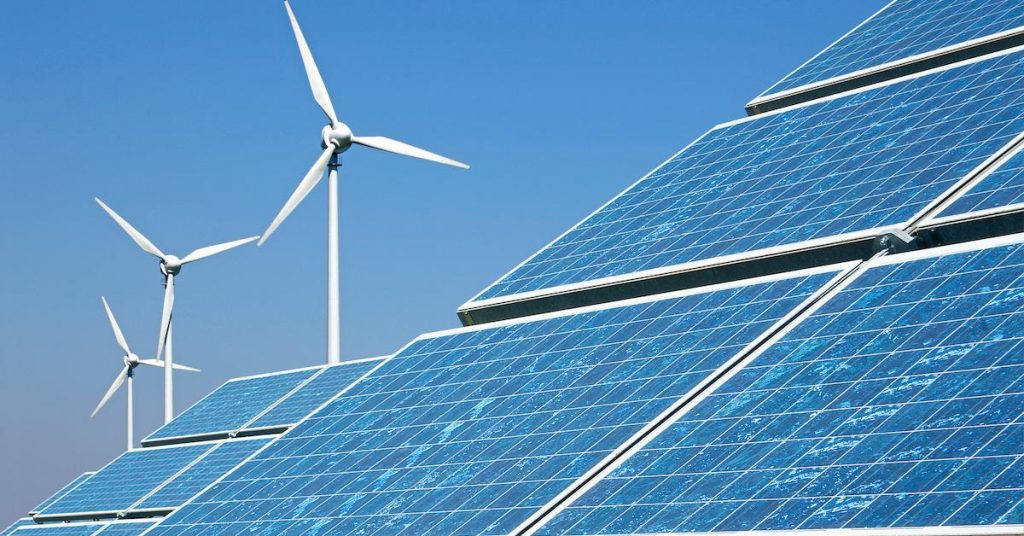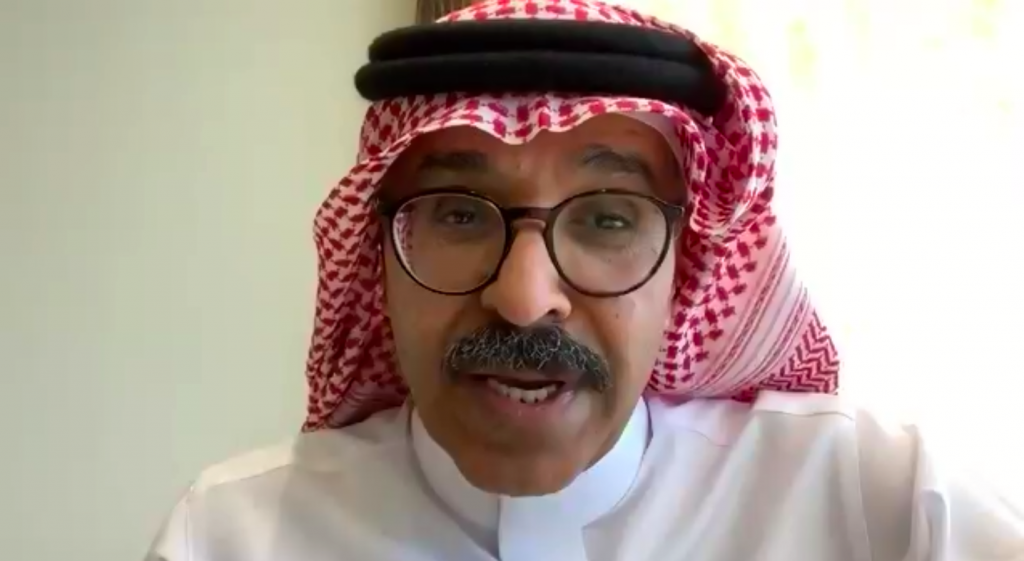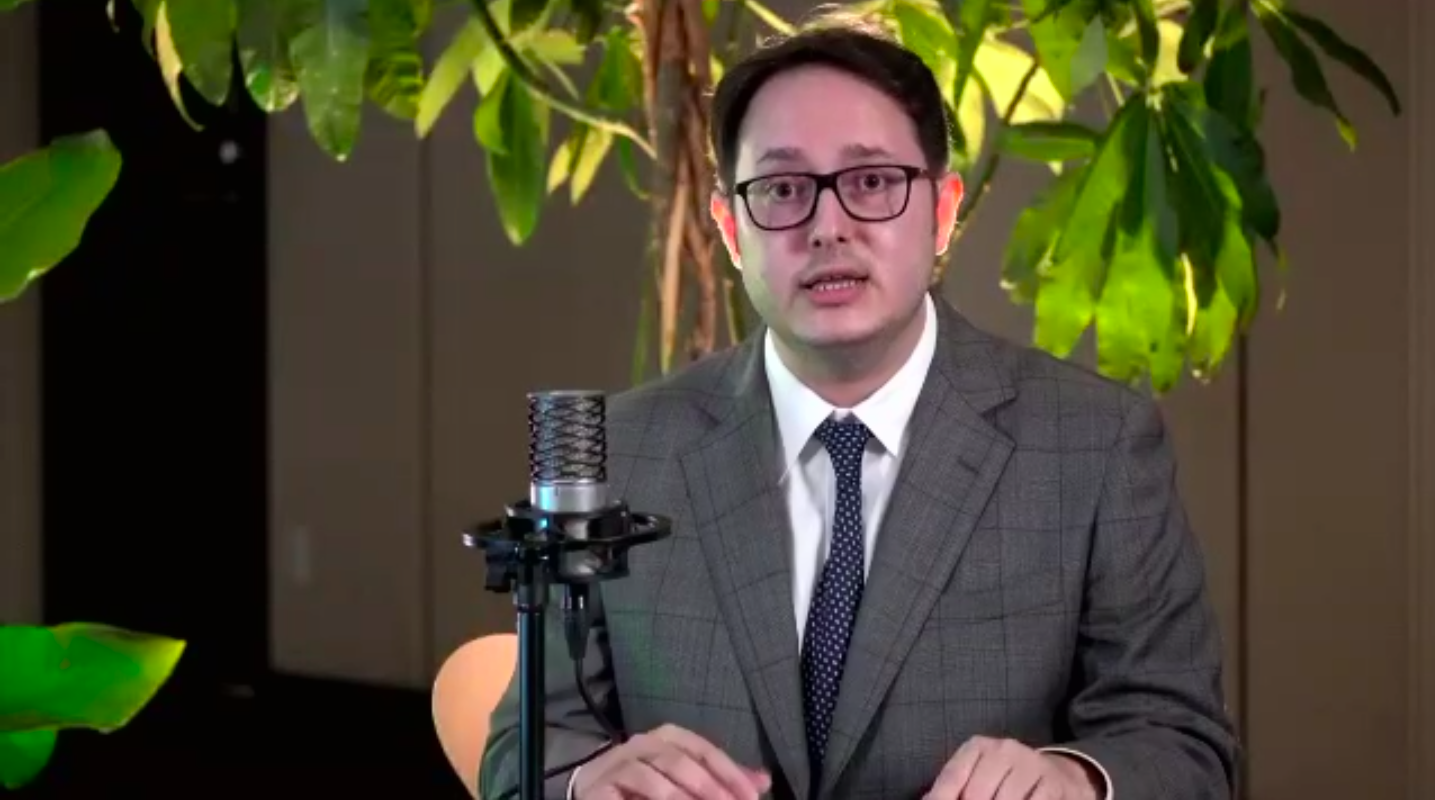





Carla Chahrour
DUBAI: Nikkei, Japan’s largest media company, on Thursday hosted a virtual seminar entitled “Smart City and Green Energy on the Horizon ― NEOM in Saudi Arabia” in partnership with the Ministry of Investment of Saudi Arabia (MISA) and the Smart City Institute on the future of Saudi Arabia and efforts to enhance the Kingdom’s competitiveness as a destination for foreign direct investment (FDI), with a specific focus on Japan.
Saudi Arabia is in the middle of developing a number of large-scale, complex and multi-purpose construction projects, which are globally distinctive in scope and ambition and aim to transform the wider economy. The Kingdom’s main giga-projects are NEOM, the Red Sea Project and Qiddiya. These collectively form part of Vision 2030 and are anticipated to significantly stimulate broader economic growth.
The online conference, attended by representatives from Japan’s Ministry of Economy, Trade and Industry (METI) and several top businesses, as well as the Ministry of Investment of Saudi Arabia and key executives from NEOM, saw presentations promoting various sectors including energy and entertainment.
The event emphasized the importance of developing expertise in the field of smart cities, strengthening infrastructure in digital management, and revealed Saudi Arabia’s determination to empower investors in general, and Japanese investors in particular, to expand their businesses in the Kingdom through the provision of compelling investment opportunities.
“COVID-19 has taught us as the Ministry of Investment of Saudi Arabia (MISA) to focus on what really matters, and in Saudi Arabia that means transforming our economy through our Vision 2030,” said Mohammad Aldarawi, a representative of Saudi Arabia’s Ministry of Investment in Tokyo.
 Mohammad Aldarawi, a representative of Saudi Arabia’s Ministry of Investment in Tokyo delivering a speech at the “Smart City and Green Energy on the Horizon ― NEOM in Saudi Arabia” conference. (Screen Grab)
Mohammad Aldarawi, a representative of Saudi Arabia’s Ministry of Investment in Tokyo delivering a speech at the “Smart City and Green Energy on the Horizon ― NEOM in Saudi Arabia” conference. (Screen Grab)“One important part of what we need to make this happen is the experience and expertise that world-leading investors can bring,” Aldarawi said. “And our analysis on how we can achieve this made it very clear that our relationship with Japan will be of vital strategic importance. What we want to convey to Japanese investors is a clear message; that change is happening in Saudi Arabia, that it is creating exciting opportunities and that we want to work with you to help you access them. And if Vision 2030 is an ambitious yet realistic visualization of what the Kingdom can be in less than a decade, MISA is the tip of the sphere that will help this happen.”
Aldarawi highlighted that giga-projects such as NEOM would not only drive investment in infrastructure and focus sectors, but also in ancillary sectors such as 5G, mobility, cloud-management, sustainability, energy and the environment.
The journey of NEOM began in October 2017 when Crown Prince Mohammed bin Salman introduced the project to the world at the Future Investment Initiative conference in Riyadh. The $500 billion mega-city planned by Saudi Arabia and initiated as part of the drive to diversify away from oil, is destined to transform more than 26,500 sq. km in the Kingdom’s northwestern Tabuk region, including 468 km of Red Sea waterfront. To put that size in perspective, the project will extend over 33 times the size of New York City, making it not only one of the largest cities to run without fossil fuels, but also as the government has described it, “the world’s most ambitious project.”
Chief Executive of NEOM Nadhmi Al-Nasr talked about the mega-city project changing the landscape of tackling environmental challenges in urban planning. He suggested that representatives from NEOM be given the opportunity to visit Japan to meet business investors to provide further details, try to bridge investment opportunities and to benefit from multicultural knowledge exchange.
 Chief Executive of NEOM Nadhmi Al-Nasr at the “Smart City and Green Energy on the Horizon ― NEOM in Saudi Arabia” conference. (Screen Grab)
Chief Executive of NEOM Nadhmi Al-Nasr at the “Smart City and Green Energy on the Horizon ― NEOM in Saudi Arabia” conference. (Screen Grab)“Let me try to define what NEOM is. First, the name NEOM says it all as “neo” is new in latin and “m” is the first letter of the word mustaqbal, which is Arabic for “future.” So NEOM means the new future. We are working on building, creating and establishing the future, not only the future from this point, but to continuously make NEOM the future in many decades to come. That’s a great challenge that the Kingdom decided to take, but while working with the rest of the globe,” Al-Nasr said.
For Al-Nasr, NEOM is a separate region within the country, which he says is comparable to the size of Belgium. However, just 5 percent of the land will be developed, and the remaining 95 percent will remain untouched to form a “nature reserve.”
“NEOM is meant to be a model where this region will be a semi-independent free zone, it will have its own laws, it will have its own regulations and its own authority as a semi-government. The reason for this is because it is our vision to make this the most competitive free zone in the world. That is not an easy task but we are up to it,” he said.
With plans to create a “new economy” based on several different economic sectors, the city is expected to contribute $100 billion to the Kingdom’s gross domestic product and create 380,000 jobs by 2030, according to Al-Nasr.
At its core, the NEOM development aims to be viewed as a “living lab” or a ‘hub for innovation” that offers people from around the world the opportunity to project and implement their innovative ideas while maintaining a sustainable ecosystem.
“We are on a mission to provide the world with a real model of what environmental sustainability would mean. We will redefine environmental sustainability,” Al-Nasr said.
Additionally, Al-Nasr called on investors and businesses in Japan to begin discussions with NEOM to form collaborations that would aid in the development of the project.
Peter Terium, managing director of energy, water and fuel at NEOM, discussed the different types of renewable energy sources that would be used to meet energy demand and supply, smart grid implementation for energy optimization in smart cities, and how Japan could play a role in the development of the mega-city.
 Peter Terium, managing director of energy, water and fuel at NEOM at the “Smart City and Green Energy on the Horizon ― NEOM in Saudi Arabia” conference. (Screen Grab)
Peter Terium, managing director of energy, water and fuel at NEOM at the “Smart City and Green Energy on the Horizon ― NEOM in Saudi Arabia” conference. (Screen Grab)“We are going to build a land of the future, and the future is about sustainability. And we know that globally, energy production is one of the main contributors to carbon emissions and therefore it’s our aim to build a country that is 100 percent supplied by renewable energy with zero carbon emissions,” Terium said.
“Just to give you a feel for the size of what we’re talking about. We are thinking about a society in 2030 that will need 30 gigawatts or 30,000 megawatts of installed capacity to support its energy consumption; that is a lot and is comparable to the size of a country like Portugal or Austria,” he said.
Terium explained that the reason behind the need for the amount of electricity use projected in the next 10 years was due to the sustainability policy. This anticipated a high degree of electrification, “whether it is electric mobility, electric drones or using electricity as a carbon-free form of energy and applications where it is currently not done.”
In order to patch a desert the size of Belgium into a mega-city powered by renewable energy, certain technological advancements would be needed to meet the electricity consumption levels. That might no longer be manageable if left unattended. The smart grid offered an answer to the shift to sustainable technologies such as microgrids, which played an important role in smart cities.
Terium described smart cities as a topic that was “at the heart of Japan.” He referenced aspects of the project that would be of particular interest to the country, offering a wider vision for researchers involved in the operation, monitoring and control of a smart-grid system by explaining their integration within the daily lives of residents or consumers.
The experience of NEOM would be different from other projects, he said. Artificial intelligence would be used to maximize the profit of the renewable energy operator in a grid where various renewable energy sources were coupled together to satisfy demand. Consumers at NEOM would likely have solar panels mounted on the roofs of their houses, battery-powered cars with storage capabilities, as well as storage capabilities within their homes. To implement generation and distribution, as well as manage the variable alternative sources to the grid, Terium talked about the need to develop a cascading grid of smart grids that brought together the technology and intelligence to manage a 100 percent renewable system.
“From the generation to the distribution transmission grid and from the distribution grids to the customers and the various customer applications is, I think, a lot of technology where Japanese companies can be of good help for us to support our development,” he said.
NEOM would comprise carbon-positive urban developments powered by 100 percent clean energy to provide residents with a more sustainable, pollution-free environment through the use of Saudi Arabia’s potential for the production of low-cost solar and wind energy.
“We have a pretty unique position in NEOM because we are among the top five as far as solar energy is concerned. Solar irradiation, as we call it, is in the top five globally. This region is very spacious and vast, with conditions best suited to generate volumes of energy not only from solar but also wind energy, and the combination of these two is very important,” Terium said.
“During the daytime we have cheap solar electricity; that’s where we need it for air-conditioning, for office time, occupation and energy consumption. But during the nighttime, where there is typically very little or no sun, we have wind. And the difficulty of the wind in NEOM is that we have it onshore and our wind is not related to the weather, but instead it is a thermal phenomenon. So the wind in NEOM is caused by the heating up of the land during the day and during the evening the cool water from the Red Sea comes in and the conduction principle is the reason that we have a very stable persistent wind during the evening and the night. The combination of that, which has come down in cost significantly as well as the solar, is something that gives us the ability to not only achieve the required amount of electricity, but to also offer it at very competitive costs.”
Terium also focused on green hydrogen, a carbon-free fuel produced using renewable energy rather than fossil fuel.
“Globally there is one sector that is currently taking off and will develop gigantically, which is the production of green hydrogen. A typical aspect of green hydrogen production, which is done through electrolysis, is that it needs a lot of electricity. The electricity used needs to be renewable, otherwise you cannot call it “green” hydrogen, and the electricity needs to be affordable or else it cannot be produced competitively. One of the projects that we already have announced is the establishment of the first large-scale green hydrogen manufacturing plant, which is going to be a more than 2,000 megawatt (MW) electrolyzer that will produce vast amounts of hydrogen, which we feel now will convert to green ammonia, which can then be transported and shipped to the export markets, namely Europe, parts of the US, but maybe also Japan and Korea, where there is a need for imports of green-fuel, specifically green hydrogen.
In response to the question of “What can Japan and NEOM achieve together?” Terium talked about microgrids and technical applications, and the development of a large-scale transmission grid system; he said there were already discussions with Hitachi ABB about this. He reiterated NEOM’s interest in collaborating with Japan on the green hydrogen agenda, in the form of the uptake of green hydrogen as well as usage and application. “I think there’s a lot of areas to discover between NEOM and Japan,” he said.
Ryohei Tamura, the director of the Middle East and Africa Division from Japan’s Ministry of Economy, Trade and Industry, contrasted the traditional relationship between the two countries with that of Saudi Arabia’s broader Vision 2030 reform plan. The latter is reliant on fossil fuels. By contrast, their relationship in the future — and as Saudi Arabia continues to undergo radical transformation under Saudi Vision 2030— is more outward-looking and involves collaboration across diverse sectors.
“I see that there’s very high expectation from the Kingdom of Saudi Arabia toward Japan. In that regard, a collaboration was formulated between the heads of states in 2016 called the “Japan-Saudi Vision 2030” that goes beyond just oil and delves into areas such as entertainment, health care, energy, entertainment, culture, sports, as well as diverse other sectors. There will be a comprehensive approach to seek the cooperation between the two countries,” Tamura said.
“NEOM brings together entertainment, innovation, cutting-edge technologies, wisdom and knowledge, all under this umbrella of sustainability. Under the comprehensive collaboration of the Japan-Saudi Vision 2030, I think that Japan will be directly and indirectly involved in NEOM,” Tamura said. He added that there were already discussions taking place in the area of green energy and entertainment, as well as around 88 other projects, confirming the strategic partnership between the two countries.
Representative Director of Smart City Institute and Associate Professor at the University of Tokyo, Noriyuki Yanagawa, explained the importance of Japanese investors contributing to projects such as NEOM, which he referred to as the “Olympic Games of technology,” and the benefits that it could offer in the development of businesses in Japan.
 Representative Director of Smart City Institute and Associate Professor at the University of Tokyo, Noriyuki Yanagawa at the “Smart City and Green Energy on the Horizon ― NEOM in Saudi Arabia” conference. (Screen Grab)
Representative Director of Smart City Institute and Associate Professor at the University of Tokyo, Noriyuki Yanagawa at the “Smart City and Green Energy on the Horizon ― NEOM in Saudi Arabia” conference. (Screen Grab)“We have a lot of technologies and initiatives in Japan that we are currently unable to carry out in a free manner due to restrictions, regulations and limits imposed by traditional operations. But this mega-project in Saudi Arabia, where a lot of enthusiasm is being placed into its development, could enable us to unleash the full capability of Japanese technologies. NEOM, in a way, is a place where there are opportunities being offered,” Yanagawa said.
“Contributing to the development of the technological domain in NEOM could allow Japan to generate successful innovations in Saudi Arabia and then bring those successes back to Japan in the future,” he said.
“I think that it is necessary for Japan to take part in NEOM and to deliver results through its participation as this would, in the long run, help in the growth and development of Japan and Japanese businesses on a global scale,” Yanagawa said.